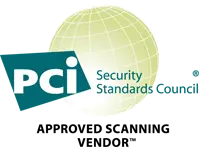Article
HIPAA Disaster Recovery Plan: Your Guide to Patient Data Security
In the dynamic cybersecurity landscape, 2023 statistics reveal an alarming 53% of incidents targeted healthcare providers, emphasizing the need to protect sensitive patient data under the Health Insurance Portability and Accountability Act (HIPAA) 1996. HIPAA, a cybersecurity cornerstone, mandates compliance and safeguards for Protected Health Information (PHI). Beyond data protection, it underscores HIPAA disaster recovery plans, compelling organizations to establish strategies for mitigating risks and ensuring patient data availability, integrity, and confidentiality. What is the HIPAA Disaster Recovery Plan? A disaster is an unforeseen event beyond organizational control that harms IT infrastructure and compromises sensitive PHI data. To safeguard against the threat, a HIPAA disaster recovery plan plays a crucial role. This plan delineates an IT-focused strategy to restore system operability, be it the entire infrastructure, specific computer facilities, or applications, at an alternate site post an emergency. The plan includes policies and procedures to be executed in the event of a disaster, assigning responsibilities to staff for a swift and efficient response and recovery. Furthermore, the HIPAA Disaster Recovery Plan is a comprehensive strategy focused on safeguarding and recovering ePHI in the face of diverse emergencies, ranging from natural disasters to cyberattacks and human errors. Steps to Create a HIPAA Disaster Recovery Plan 1. Conduct a Business Impact Analysis</h3 > Conducting a Business Impact Analysis (BIA) is a thorough assessment essential for evaluating the cybersecurity readiness of your healthcare organization. It demands a meticulous examination of your business's data types and volumes, storage locations, and the necessary time and resources to restore access to specific data categories. It also involves strategically determining which data is most important for your business operations. The BIA process for your organization includes: Identifying the various types and sizes of data within your management purview Recognizing where your data is stored and acknowledging the systems critical to your day-to-day operations Estimating the maximum resources and time required to recover each data type 2. Perform a Risk Assessment Establish a robust risk assessment framework that integrates continuous monitoring and analysis. A vital element of this framework involves developing an extensive risk register and strategically prioritizing potential threats based on their likelihood and impact on the organization. Additionally, simulate hypothetical disaster scenarios to assess their potential consequences: Cybersecurity Threats: Unauthorized intrusions, such as malware, ransomware, or hacking attempts, pose a significant risk by disrupting systems and compromising critical data. Severe Environmental Incidents: Events like hurricanes, floods, tornadoes, and adverse weather conditions can lead to extended power outages, impacting the seamless functioning of operations. IT Downtime: Situations involving reduced or non-existent IT availability due to technical malfunctions, software glitches, hardware failures, or unforeseen circumstances can immobilize operations. 3. Maintain a Document/Report</h3 > Maintain meticulous documentation of your breach, disaster recovery plan, and any incidents, including incident reports, recovery logs, and post-incident evaluations. Regularly review and update this documentation to align with organizational process and procedure changes. This report serves as a valuable resource in the event of a disaster. 4. Create a Response Team</h3 > Establish a dedicated team for disaster recovery, assigning specific roles with a keen emphasis on a profound understanding of the pivotal role of HIPAA compliance in the recovery process. Implement regular exercises to ensure the team is adept at handling diverse scenarios and enabling a swift response in the face of cybersecurity challenges. Maintain an up-to-date contact list and communication strategy, facilitating prompt action when required. This ensures a rapid and coordinated response to cybersecurity incidents. 5. Develop a Data Backup Plan</h3 > In the HIPAA disaster recovery strategy, the data backup plan plays a pivotal role by requiring organizations to secure...
View More






